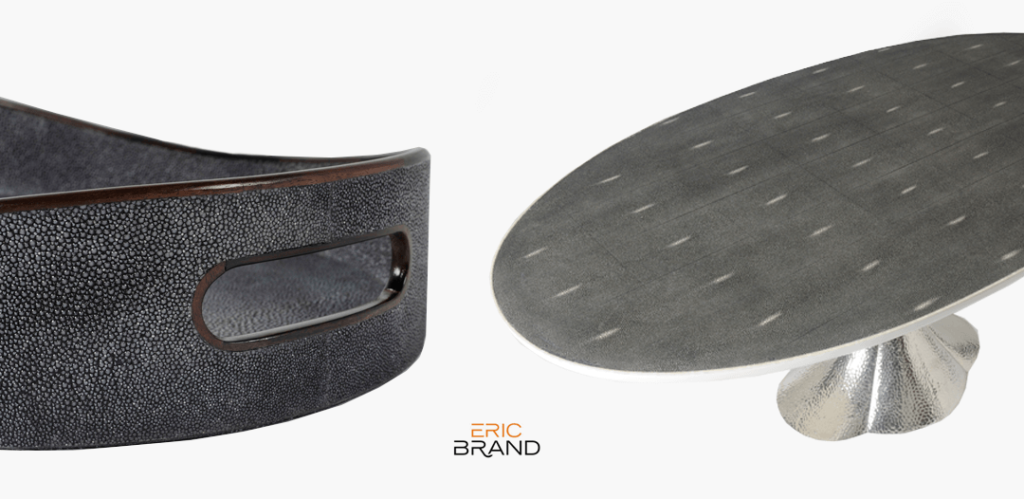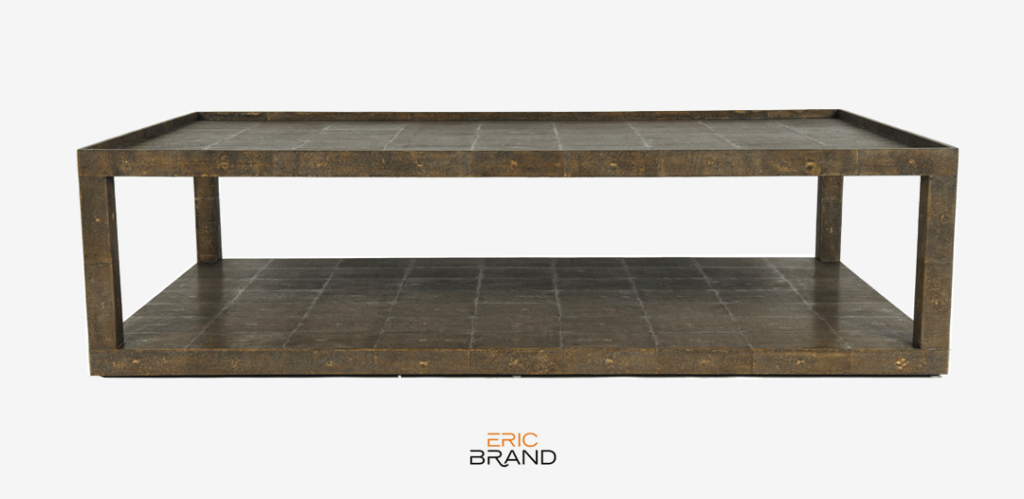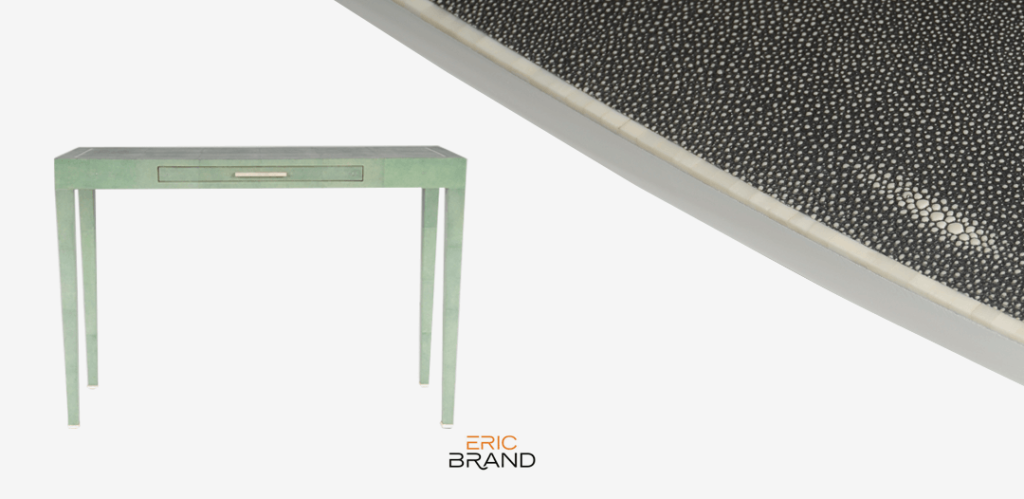Shagreen – The Durable Material That’s Lasted Through The Ages
Shagreen is a material that’s been used for centuries but is still very much in favor with contemporary designers and craftsmen. Initially, the term “shagreen” was used to describe the rawhide of an animal with a rough pitted surface, most commonly the exotic texture of ray fish or shark skin.
It’s thought that the very first people to use shagreen were the ancient Egyptians and evidence of this has been discovered in the tombs of the pharaohs. However, this rawhide finish is most well known in history adorning the hilts of Japanese swords during the Middle Ages. The material’s popularity continued to flourish in the 1700s, when it was used to bind books and cover trunks.
Its pebbly texture is sanded and buffed to achieve varying smooth-but-durable sheens, which explains why shagreen has typically been used for covering portable items such as luggage, books, boxes and other items that experience frequent wear-and-tear.
Given its source, it’s no surprise that shagreen is basically water resistant, making it a popular material for use near wet areas, such as in bathrooms. Just like straw marquetry, this material takes dyes very well, offering a pleasant variety of Pantone colors – typically achieved with vegetable dyes.
Shagreen eventually reached its full potential as a fabric in the Art Deco era, covering cabinets, desks, and other furnishings in the homes of French aristocrats in the 1930s. But like most trendy finishes, it fell out of style and wouldn’t be revived until the 1960s & 70’s by design maestro Karl Springer.
But, today the real deal is taking a backseat in the design world, which is presently in step with the green movement and sustainability. Faux shagreen is a vinyl material (though it’s also available in leather) which is considerably more durable than actual shagreen, which can dry out over time and easily break off. When this happens, it can leave a deep crevice that is difficult, if not impossible, to repair.
Faux shagreen also has a repeating pattern that renders it far less costly than the real deal, which remains so expensive because of the small area of fish skin that can actually be used (normally only a rectangle in the center) coupled by the work and skill necessary to prepare and ultimately inlay them.
That said, 3D modelling allows modern designers to create patterns in shagreen which can be wrapped around surfaces with compound curves – something that was previously possible only with extremely time-consuming hand-cutting and bespoke tailoring.
From the swords of ancient Samurai to 3D printing, it’s safe to say shagreen is a material that will continue to inspire designers for some time to come…
_____________________
ERIC BRAND
Founded in 1996 and based in San Francisco, Eric Brand offers custom-styled furniture and worldwide sourcing along with exquisite materials and finishes, specifically for the high-end residential design market and hospitality industry.
JUNIPER
Named after the fog-licked Juniper trees on the hills of San Francisco, Juniper is an in-stock furniture collection by Eric Brand that pays homage to timeless materials, techniques and silhouettes – brought to life through expert craftsmanship.




